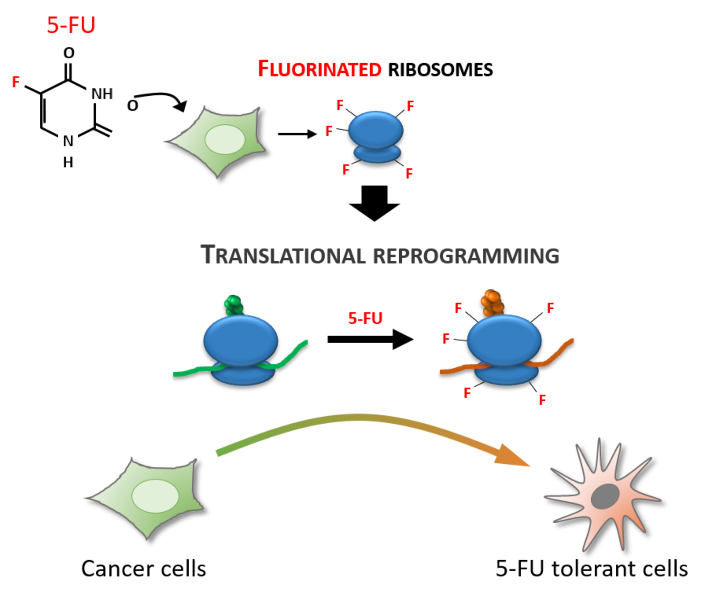The 5-fluorouracil (5-FU) is one of the most frequently chemotherapy given to patients with cancer. Its efficiency, mainly when associated with other molecules, has now been demonstrated but it is also often impacted since some cancers, including colorectal cancer (CRC), can escape and lead to the so called tumor recurrence.
In a recent paper, published in Nature Communications, a team from CRCL (center of cancer research of Lyon) in collaboration with the team “Signaling, Plasticity and Cancer” from IGF and the Laboratory of Computer Science, Robotics and Microelectronics of Montpellier (LIRMM) has deciphered new mechanisms involved in tumor escape in order to further prevent them.
They have thus discovered an unexpected result. Indeed, this study shows for the first time that 5-FU, in addition to incorporate in DNA, can be integrated in ribosomal RNA. More particularly, authors have demonstrated that ribosomes modified by 5-FU incorporation, named F-Ribosomes, have an altered translational activity including an increased expression of proteins involved in cell survival which could provide a way to tumors to escape chemotherapy. The IGF team has brought a translational flavor to the project by validating results on preclinical models relevant for human CRC as well as on CRC patient tumors.
Deciphering such mechanisms involved in drug resistance is of importance to open the path to the discovery of innovating therapies to improve CRC patient standard of care.

5-FU incorporation into ribosomal RNA induces a translational modification which could lead to resistance to chemotherapies.


